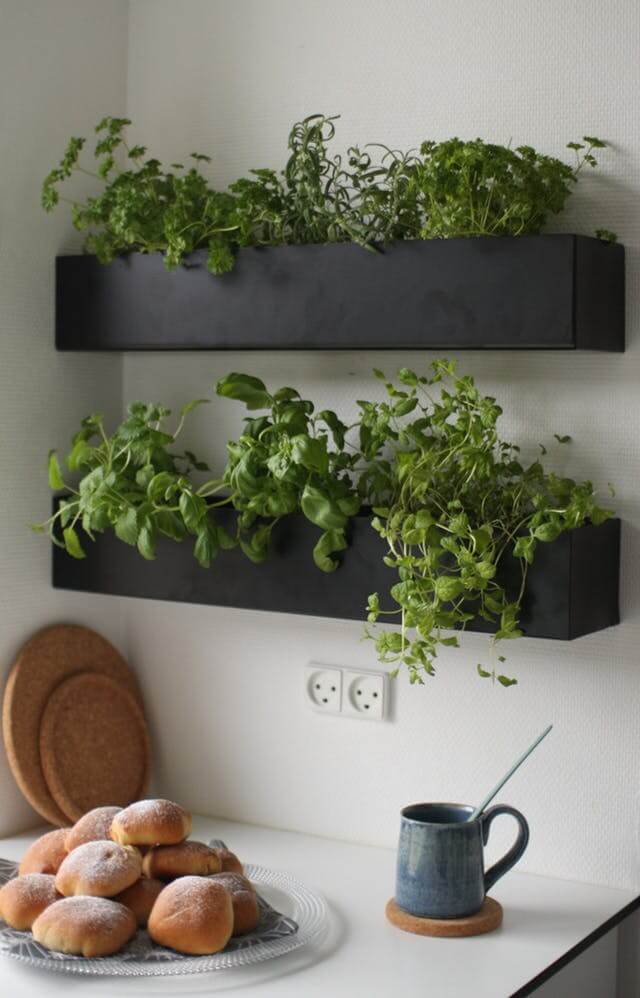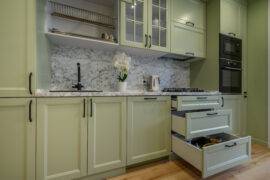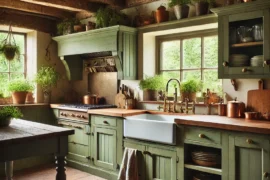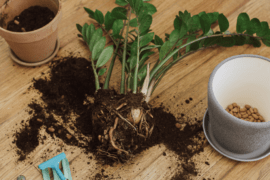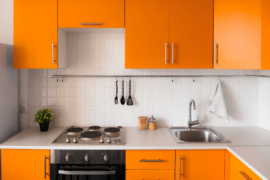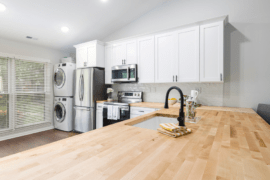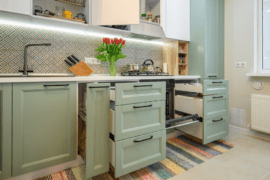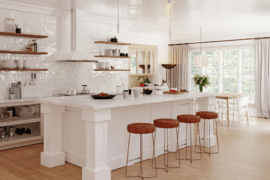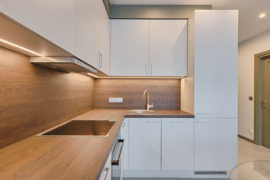Spending days together indoors as you wait out the current global pandemic can be a really difficult thing to do; even if it is the correct way forward. This is especially true for many who cannot work from home anymore and have to suddenly adjust to a whole new lifestyle. Obvious ideas like turning towards television or arts and crafts only work that long. Soon, there comes a time when you are craving for something different; something more nature-centric but indoors. And that is why we are here today to share with you some of the best and easiest kitchen herb garden ideas out there!

The idea of an indoor herb garden is a perennial hit and if you live in a region of the world where winters are not too harsh, then a fresh herb garden in the kitchen is a possibility all year long. Spring is arguably the best time to get started with one. Before undertaking more extensive gardening tasks or even venturing outdoors, start off small with a lovely little herb garden that fills the interior with freshness and creates a healthier, smarter kitchen. Time to get innovative as you invite green indoors this season –
Working with Limited Space
The most obvious factor when it comes to creating a new herb garden in the kitchen is space. Remember that we are not talking about just one lone, small pot with a single herb. You will definitely need a bit more variety to call it a ‘garden’. A good place to start is by thinking ‘vertical’ and using all that empty wall space in the kitchen. Hanging planters and DIY herb planters are pretty easy to create and incorporate into a modern kitchen. They require little care on a regular basis and also turn an empty wall into a fabulous, green focal point.

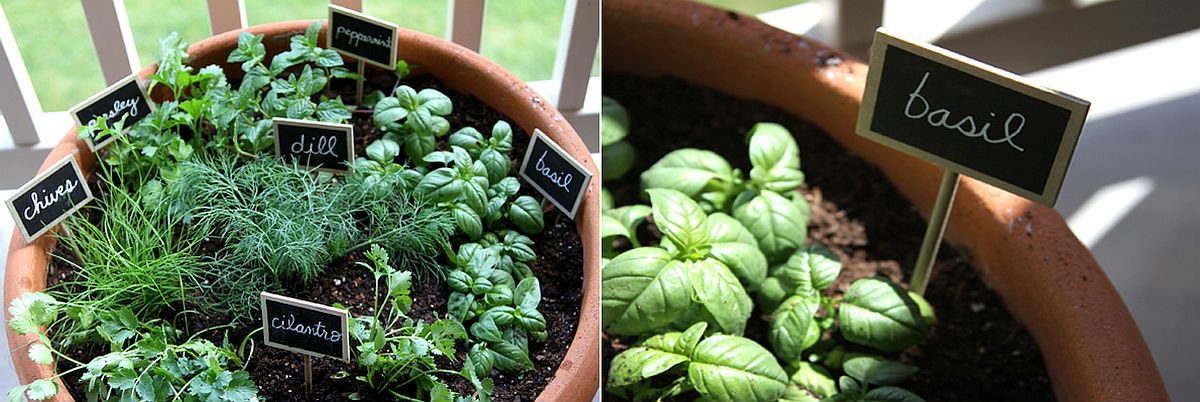
Another creative idea is to use a metal rod next to the window and hang planters that receive all the sunlight needed even while taking up absolutely no counter space at all. If you are not someone who likes the idea of hanging planters, then a large terracotta pot with multiple herbs is a really clever idea that we adore. It shows how little space you need to grow all the herbs one generally uses in the kitchen.
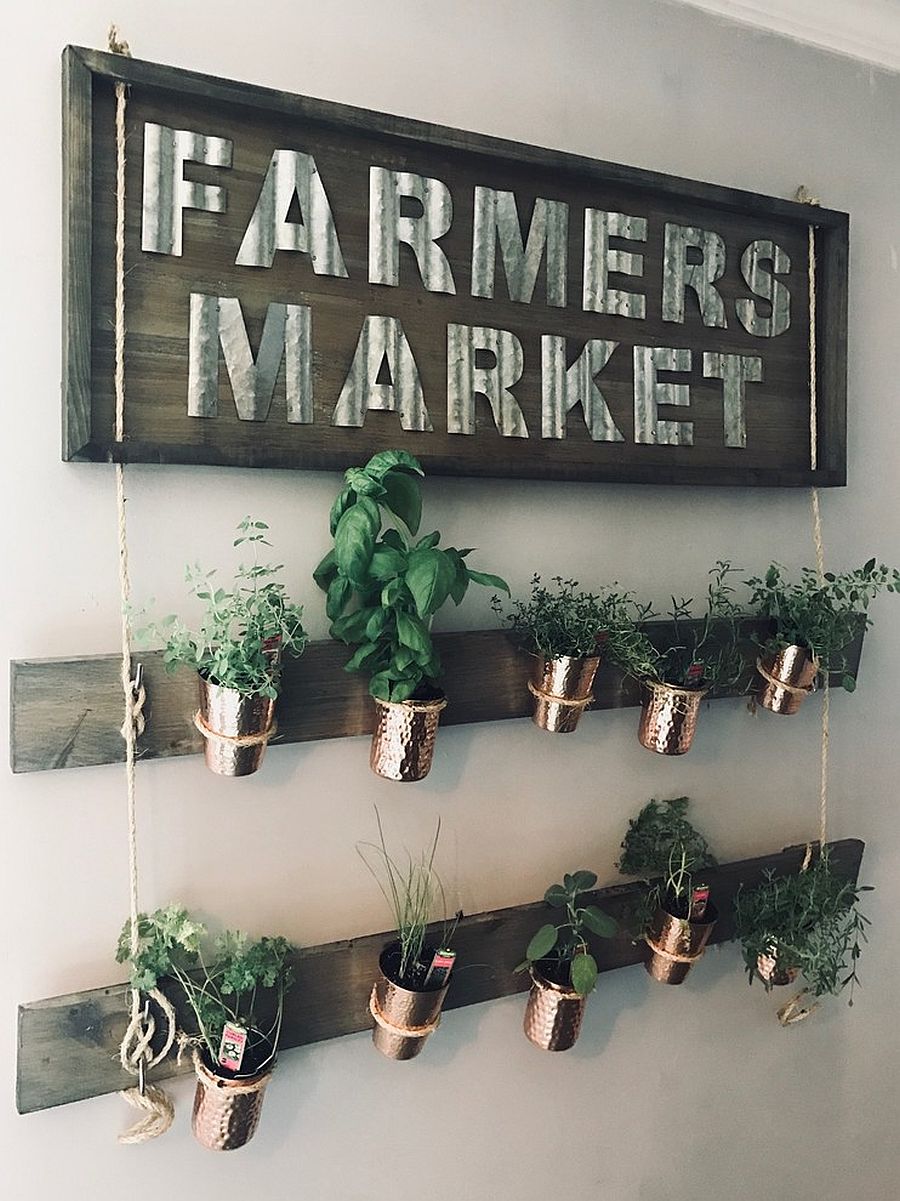
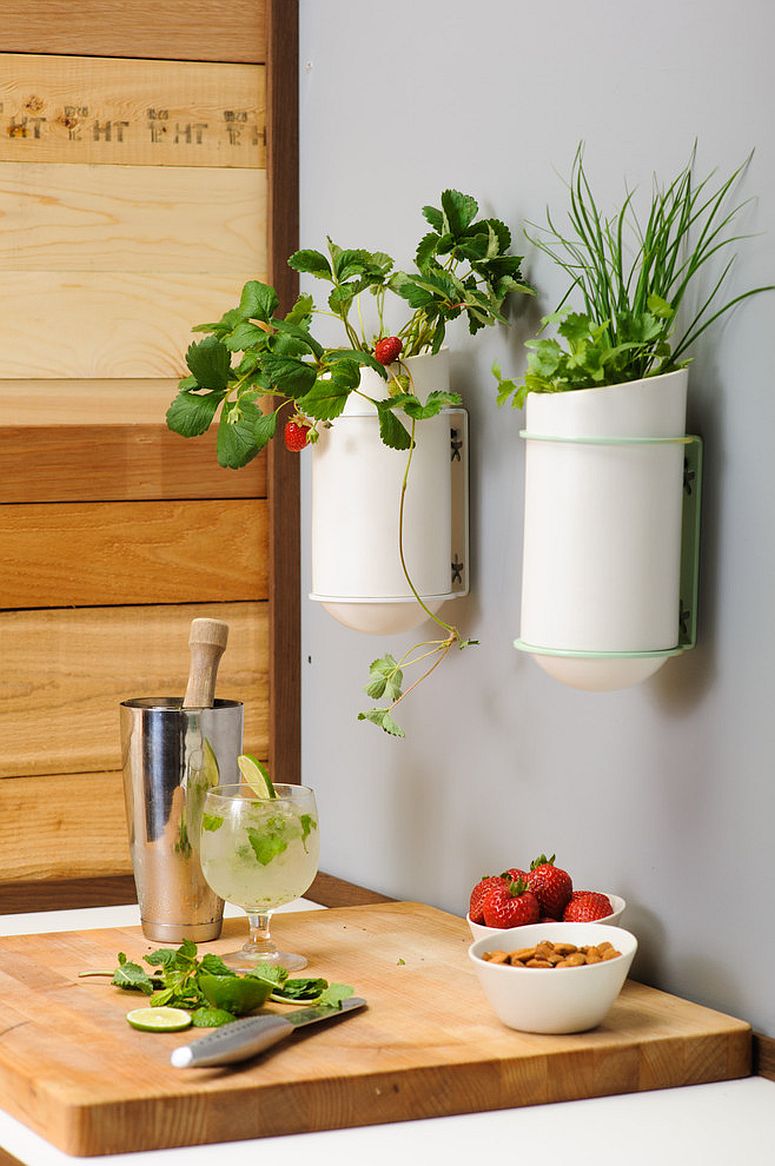
Built-in Solutions for your Herb Garden
If you are thinking about a kitchen remodel anytime soon (or maybe planning for a whole new kitchen once the current pandemic passes), then a built-in bin for the herb garden is a must-have. This is perfect for those who love a bit of greenery in the kitchen all the time and also like to work with fresh ingredients while cooking. The bin can be part of the kitchen counter, the island or even an area just next to the window. There are plenty of contemporary alternatives available as well that turn the kitchen herb garden into a showstopper – if you are not happy with more rustic, DIY solutions that is!
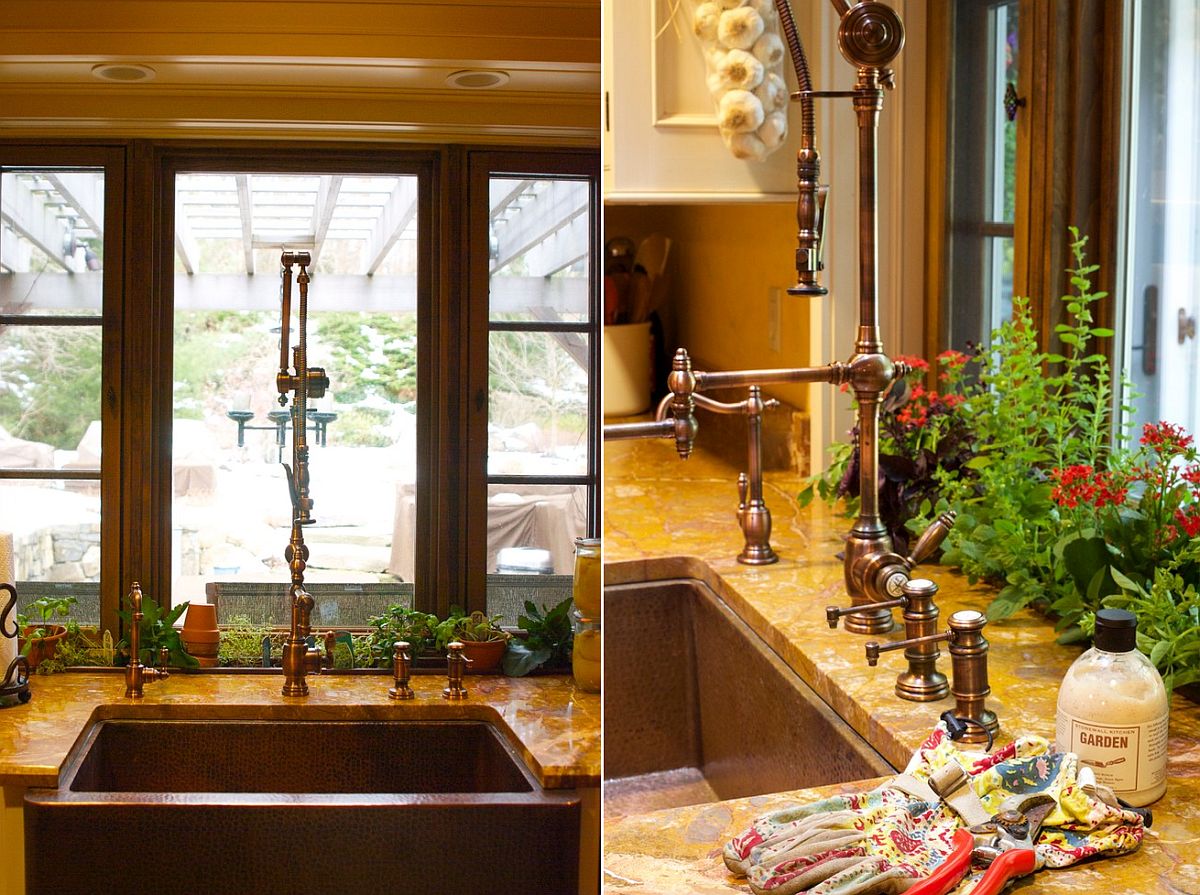
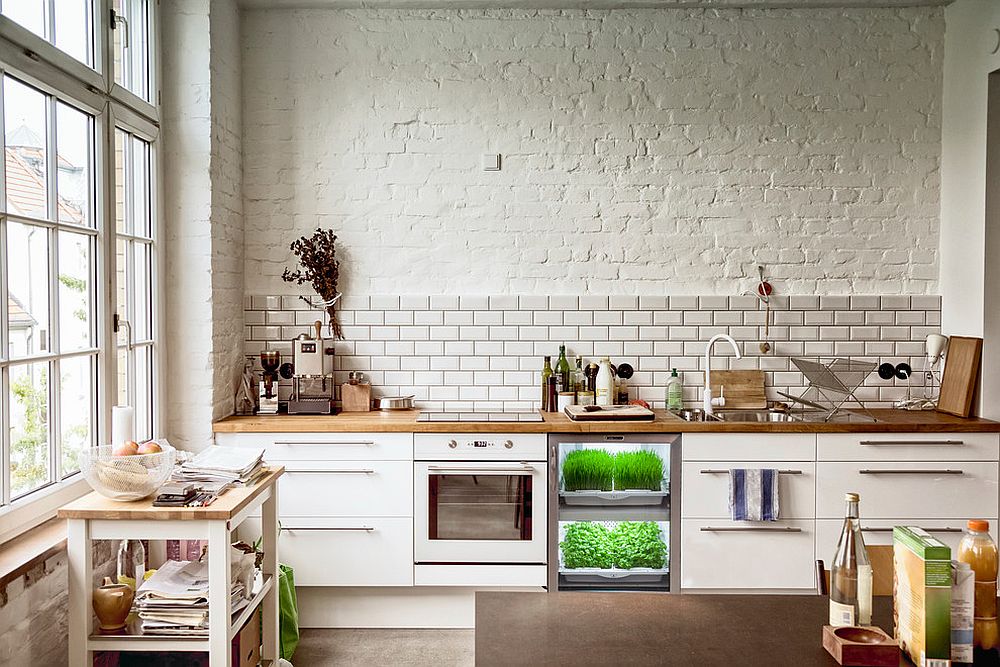
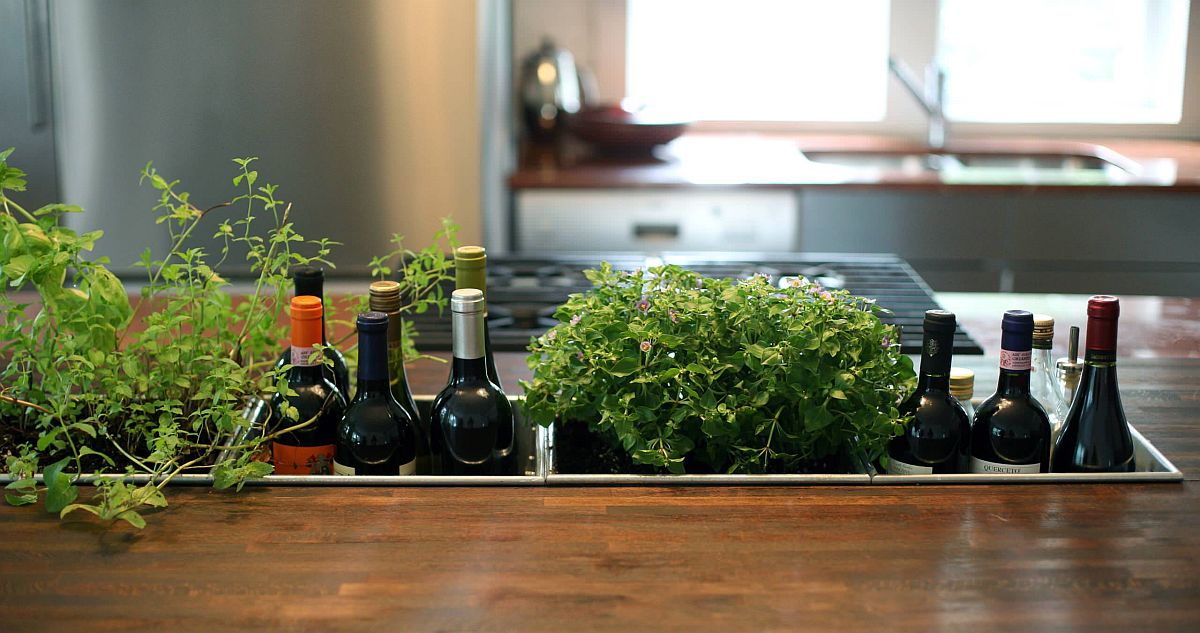
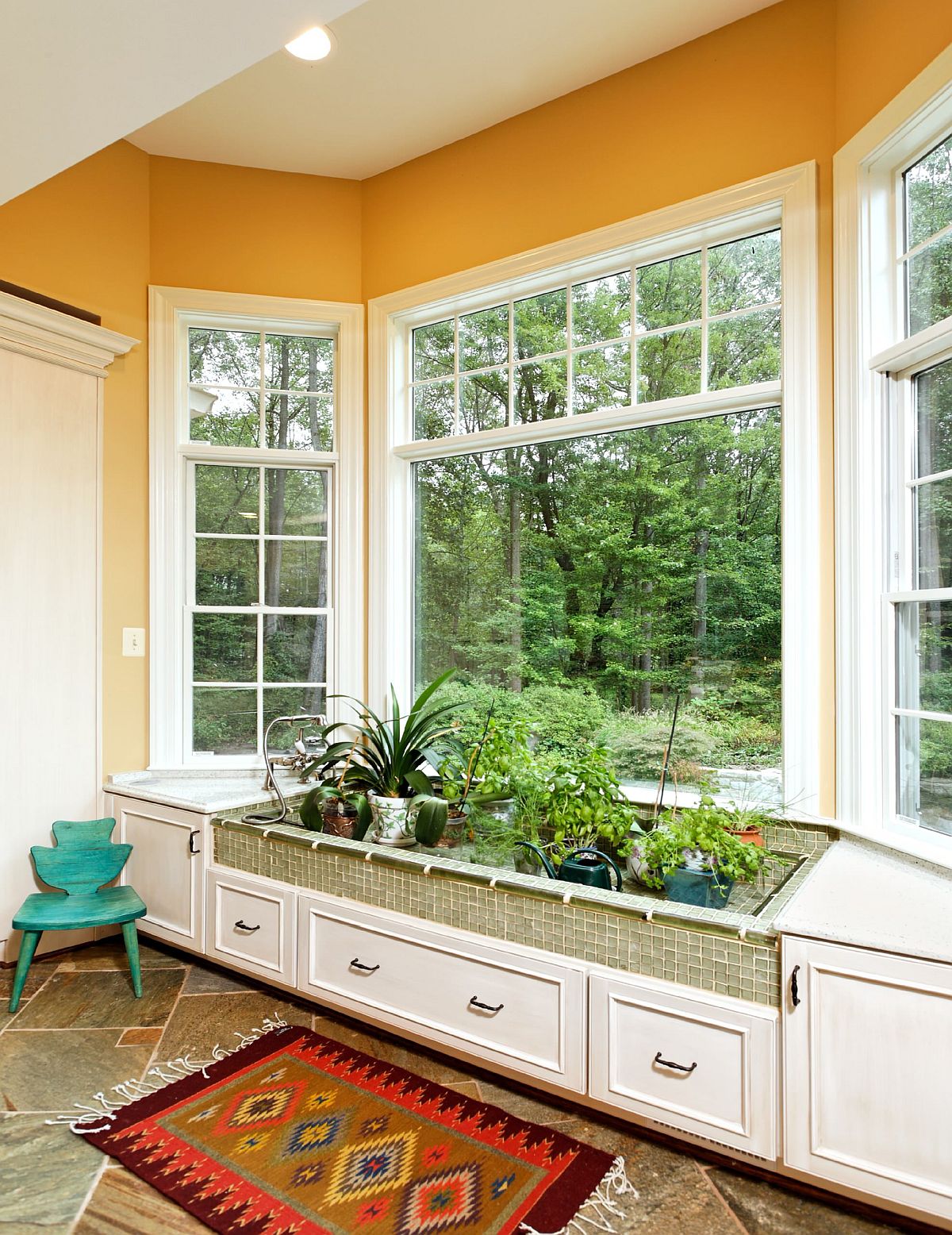
A Place next to the Window
The place next to the window is the most ideal spot for a herb garden in the kitchen. It could be a window seal, a custom set of steps next to the window or even hanging planters – this is an area that is often forgotten because we are too busy looking outside the window! There are plenty of different ideas that can be put to work here depending on what you want. A small herb garden using terracotta pots is the easiest choice. But ideas like a herb garden on old bar cart or trimmings in jars of water that can be later replanted in the garden outside add something different in terms of visual charm.
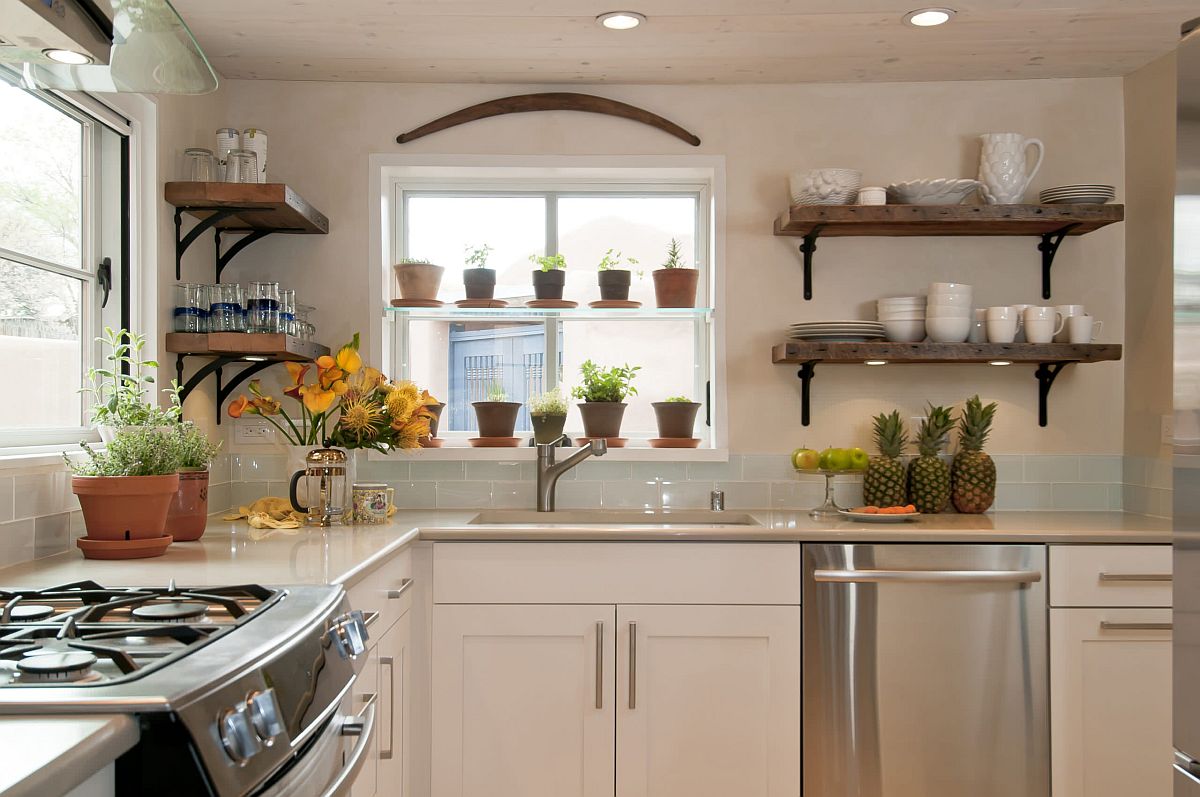
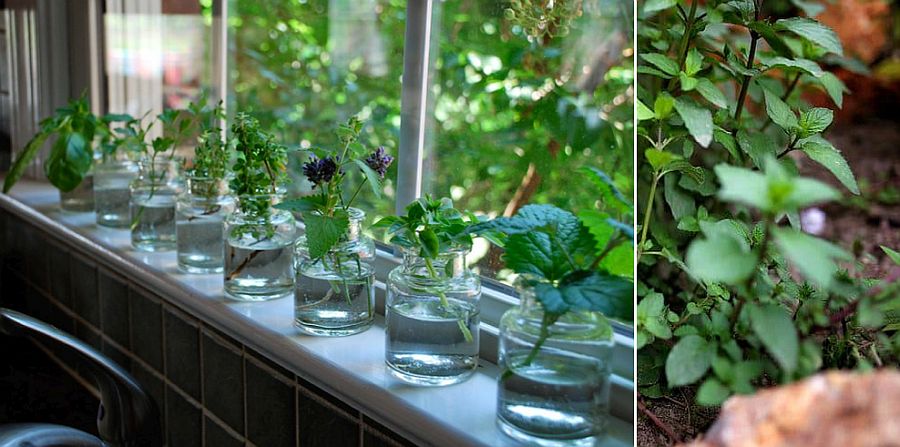
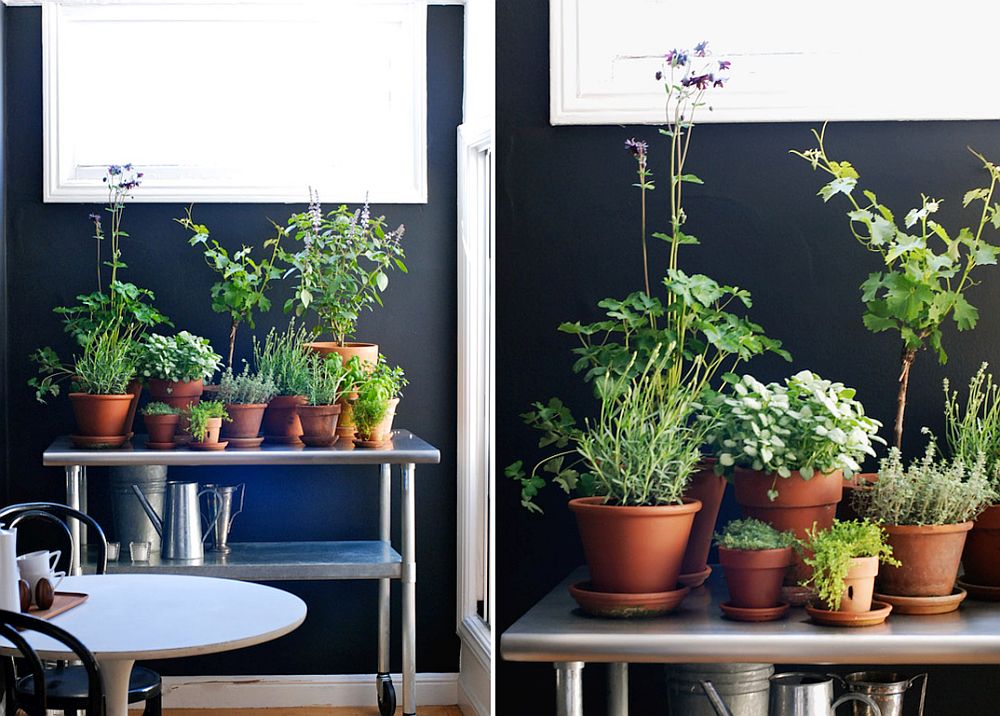
Selecting the Right Herbs
Most herbs can be grown indoors, but those that tend to really thrive inside include no-fuss picks like basil, chives, mint, oregano, parsley, rosemary, and thyme.
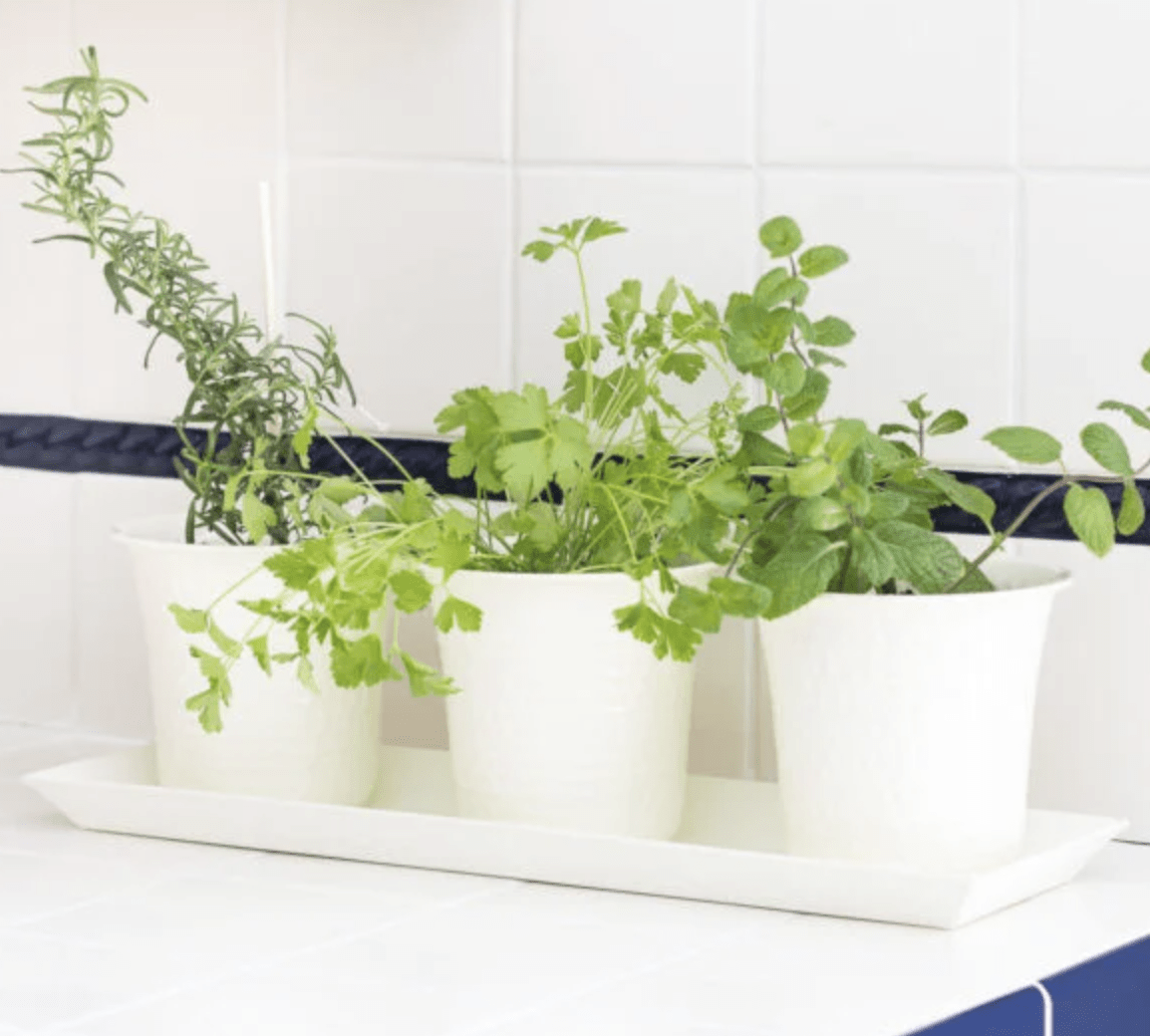
Many herbs can be grown indoors for flavor or fragrance, so choose your favorites. If this is your first time growing a windowsill herb garden, select just three to five herbs to keep the garden manageable. Some of the best plants for your indoor herb garden include:
- Basil
- Chives
- Lemon balm
- Lemongrass
- Marjoram
- Mint (try spearmint, peppermint, chocolate mint & others)
- Oregano
- Parsley
- Rosemary
- Sage
- Thyme
How to Care for Kitchen Herbs
In addition to giving your herbs enough light, you’ll need to water them regularly. Don’t let them dry out, but don’t overwater them, either. Pour out any excess water that collects in the tray or saucer they’re sitting in.
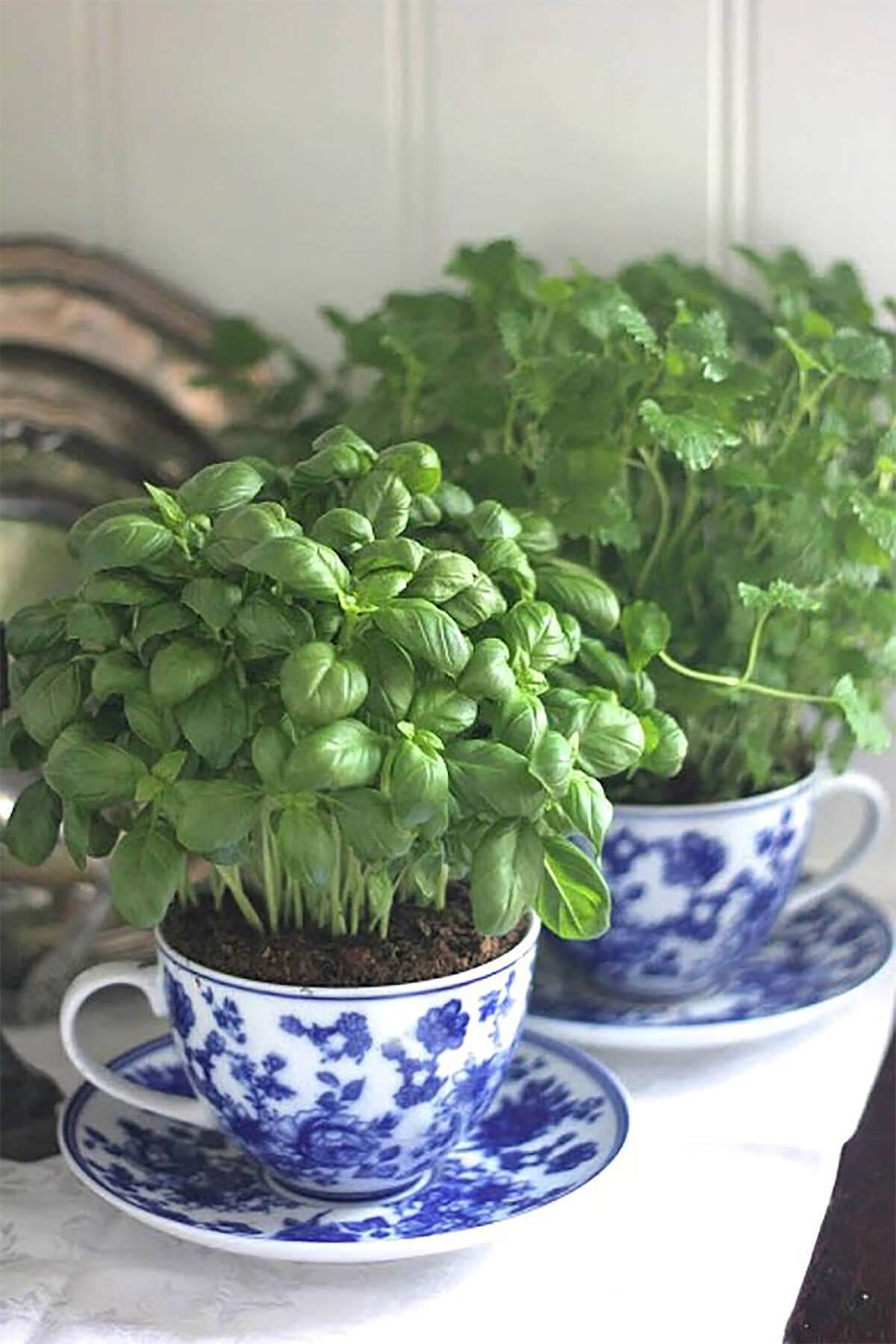
Fertilize your herbs while actively growing with a fertilizer made for vegetables and herbs. Read the fertilizer label to know how much and how often to feed. Too much fertilizer will produce a lot of foliage but can weaken the flavors.
An indoor herb garden also needs high humidity and good air circulation. Mist your herbs a couple of times a week with water from a spray bottle or place them on a tray filled with pebbles and a little water, keeping the bottom of the pots slightly above the water. If your indoor herb garden doesn’t get good air circulation, use a fan around them, but don’t let it blow directly on the plants.
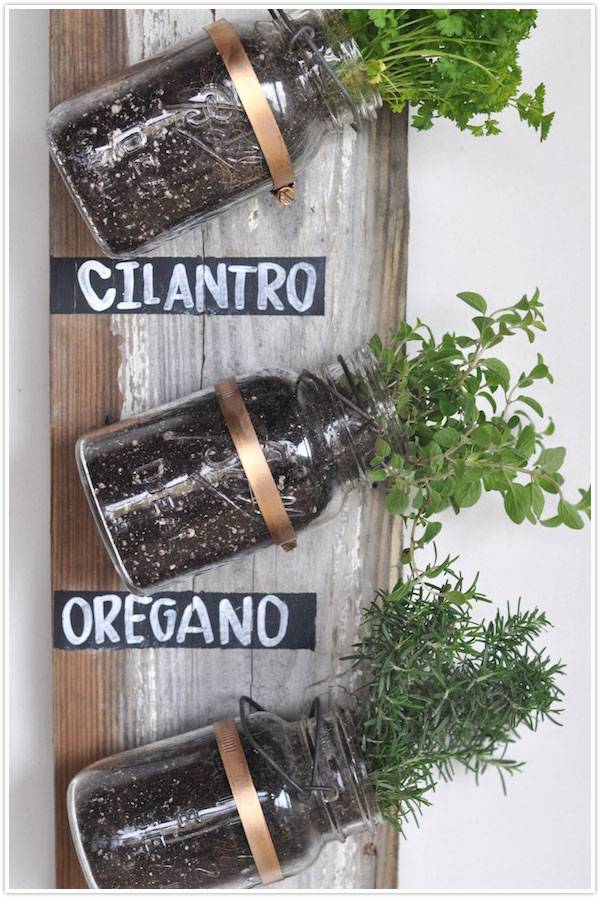
Do a little research on the herbs you want to grow, so you’ll know which ones have different growing requirements. Basil, for example, is a little different from most other herbs and does best when grown at a constant 75 degrees Fahrenheit. Its leaves will start to wilt if it gets too cold.
If you see roots coming out of the bottom of your herb pots, move your plants into pots or planters one size larger and give them fresh potting soil. Some herbs can be divided and replanted in small pots so they’ll still fit in a windowsill herb garden.
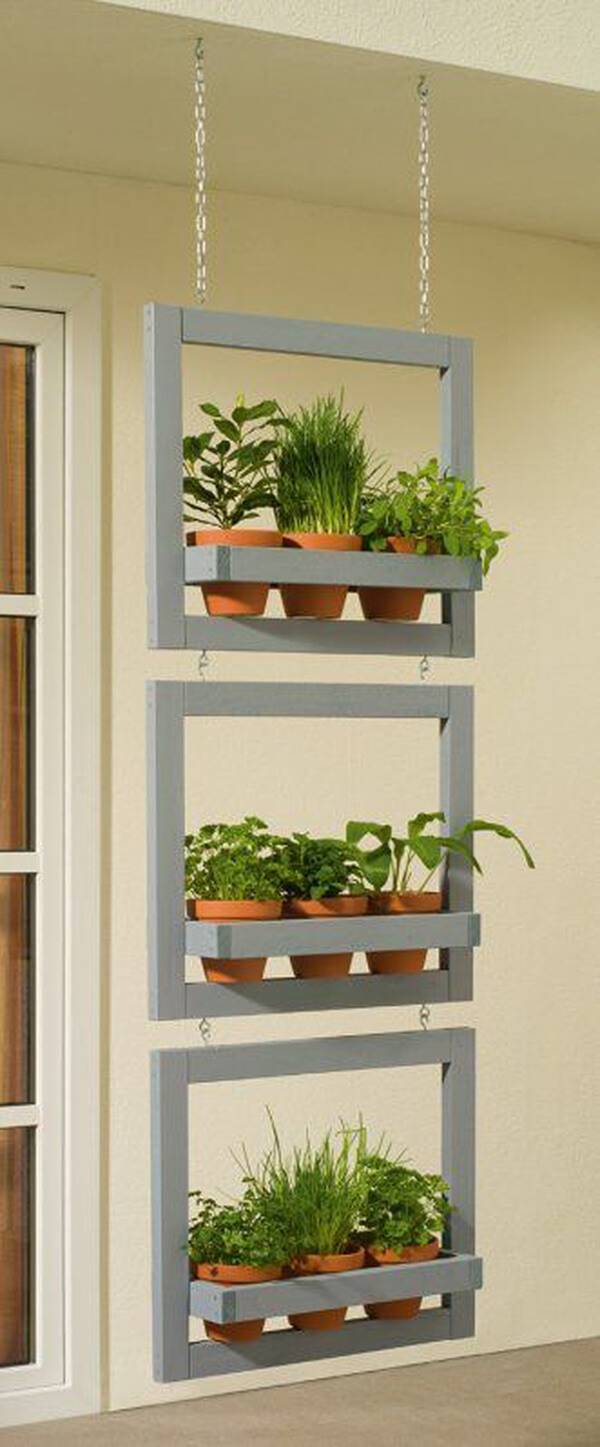
Afraid you’ll underwater or overwater your herbs? Use a soil moisture meter. It will help you know when it’s time to water.
Full-spectrum grow lights are great for herbs. Run them for 12 to 16 hours a day for herbs that need bright light and keep your plants within a foot or so of the bulbs.
Pot Selection
While there are dozens of herb pots you can buy, you can plant herbs in just about any container so long as it has some type of drainage. The pots also need something to protect the surface underneath them, like a saucer or round plastic protector, which you can find at garden centers.
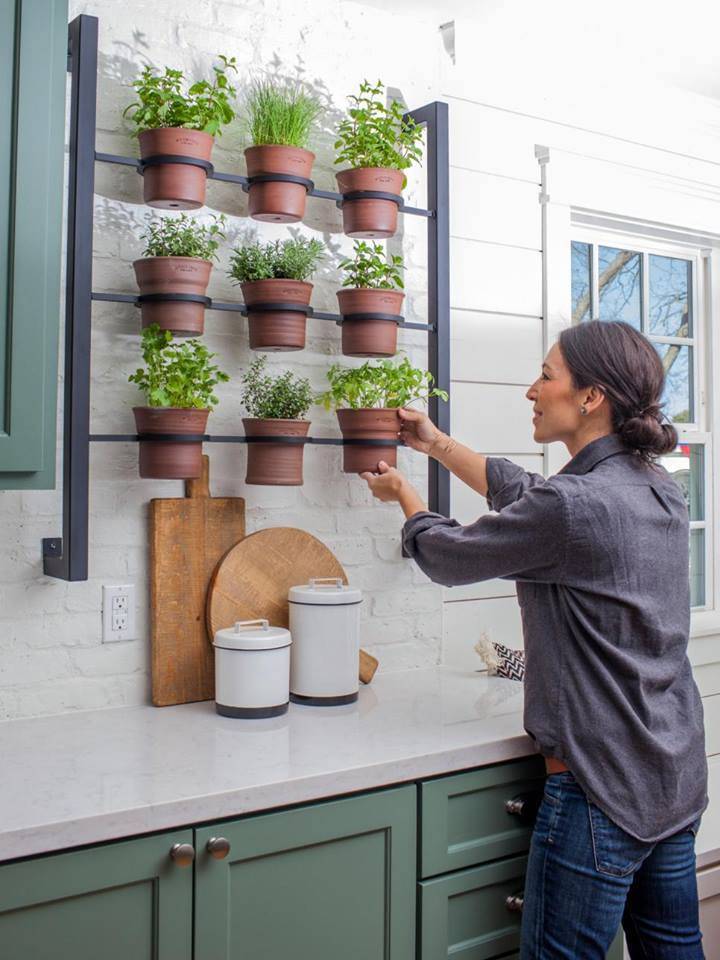
You can use any size container you like, provided the plant fits, but realize that the smaller the vessel, the sooner you’ll have to repot. If you are using nontraditional planters such as mason jars, make sure to place a layer of pebbles in the bottom to catch excess moisture, so your potting soil doesn’t get saturated.
Where to Place Your Herbs
Most herbs prefer a lot of sunlight. That means you’ll want to give your indoor herb garden at least six hours of sun per day to thrive.
To maximize their exposure, place plants as close as possible to your brightest window–the bright light of a south-facing window is best. Avoid setting them in the center of a room or near a window with northern exposure–neither will offer enough light.
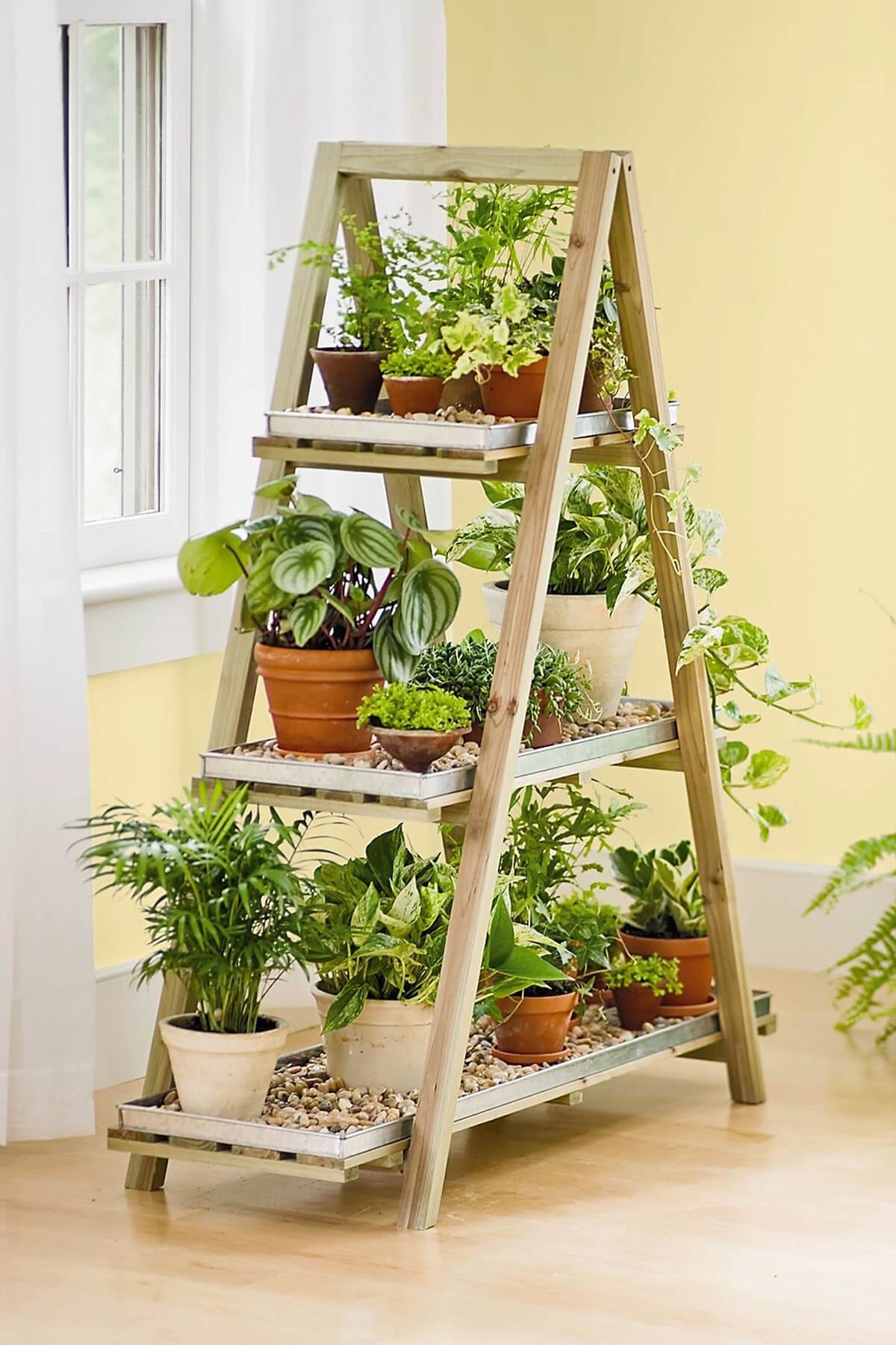
Growth may be slow in the winter when there isn’t much natural light. During those months, consider investing in a grow light or led light while you wait for spring to arrive.
Harvesting
Harvest a few sprigs with kitchen shears or by pinching leaves off with your fingers. Bonus: Regular cutbacks encourage new growth. Avoid removing more than a quarter of the plant at a time, which will cause distress and could even kill the plant.
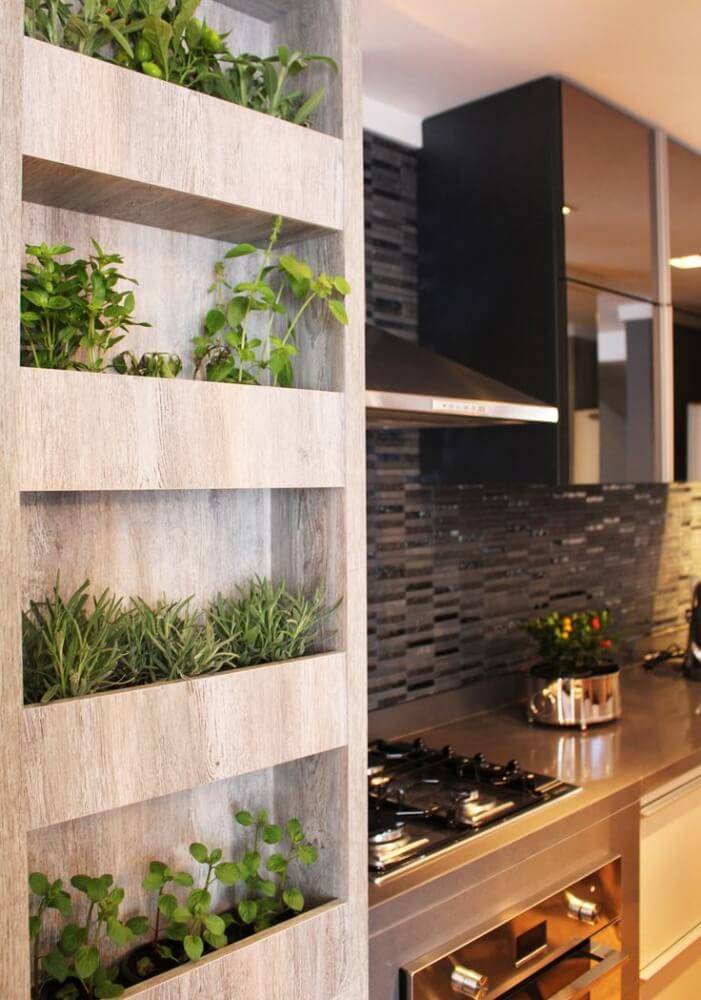
Transplanting
Indoor herb plants are not forever. The good news/bad news is that if you do it right, your herbs will eventually outgrow their containers and need more space. If you see roots coming out of the drainage holes, growth seems to have stalled or the plant starts to flop over, it’s time to transplant.
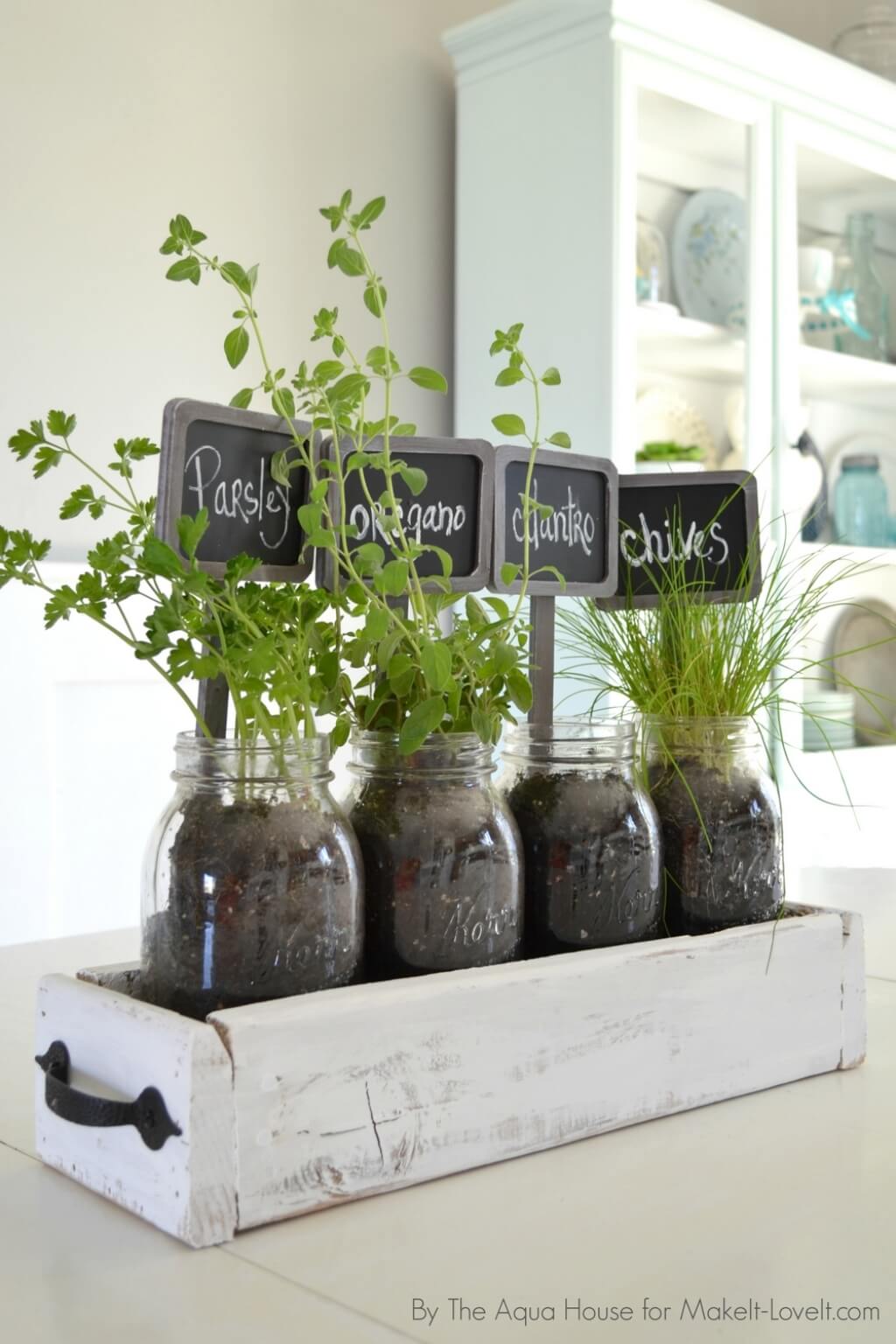
In most climates, perennial herbs such as lavender and mint can be started inside and moved into the ground after the threat of frost has passed. Annual herbs can be moved outdoors through the end of the growing season. When cold weather approaches, you can either bring the pots back indoors or leave them outside, but be sure to take cuttings before the first frost so you can start the whole indoor herb garden process over again.
Both annuals and perennials can be moved into larger pots within your home at any time; just keep them close to a light source.
Windowsill Herb Gardens
To start your kitchen herb garden from seeds, read your seed packets carefully for detailed planting instructions. Generally, you’ll need to start the seeds indoors about six to eight weeks before the last frost.
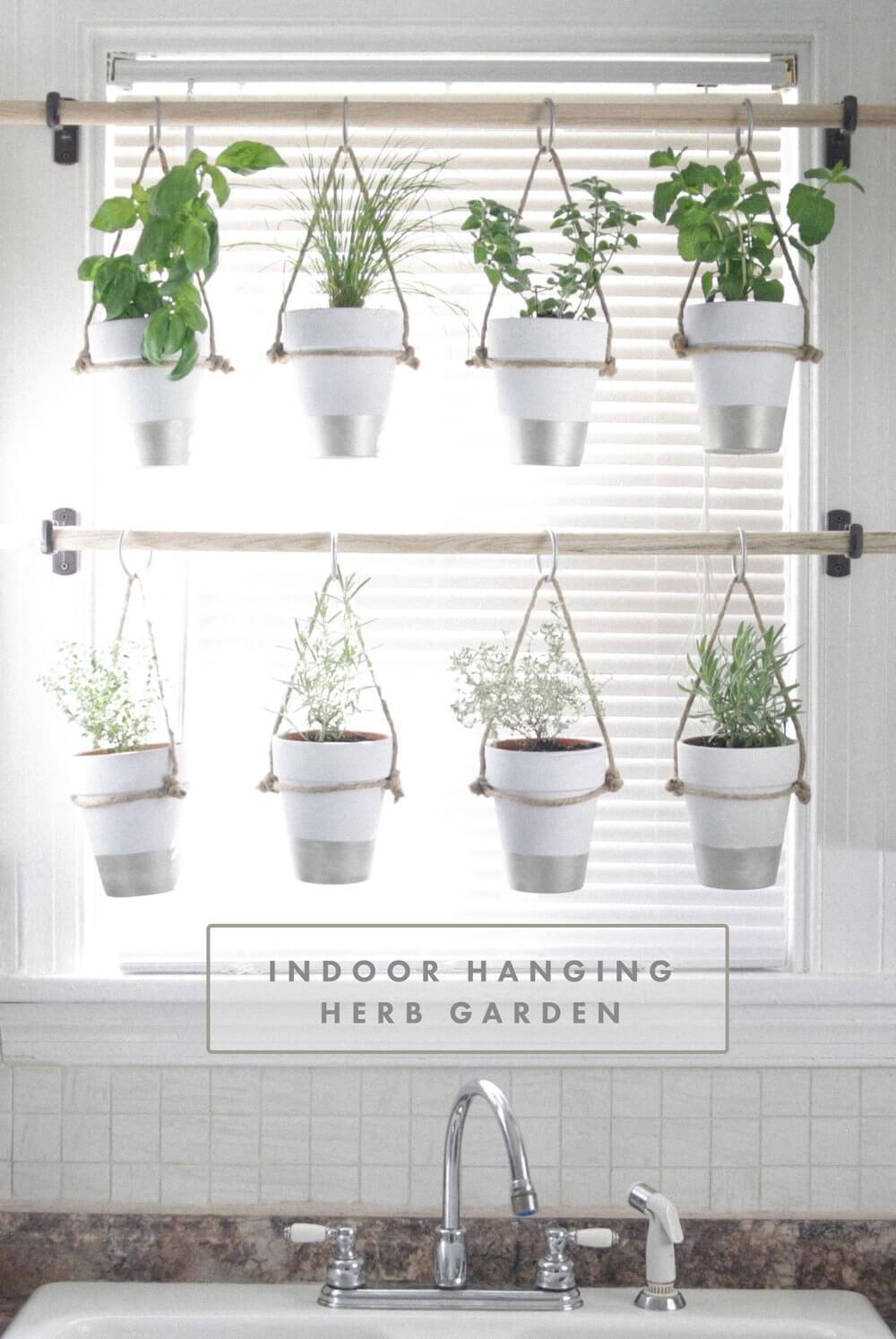
Fill each of your containers with fresh potting soil up to one inch from the rim. Sprinkle a few seeds on top of the soil or, for larger seeds, bury them; cover with a bit of soil and pat down. Cover with a plastic wrap or dome to keep moist and promote germination. When seedlings start to show, remove the plastic.

If you want to start your window herb garden from a plant, put two to three inches of potting soil into a new, larger pot than the one your seedlings originally came in. Transfer the plants to a new container, gently teasing or loosening the roots, so they flare out; otherwise, the roots stand a chance of strangling themselves. Add potting soil up to about an inch from the top of the container. Water thoroughly and immediately.
Seeds or Plants?
Starting herbs from seeds is possible and rewarding but it will take significantly more time to grow to the size necessary to begin harvesting. It’s ideal to source herbs from seedlings, which are young plants that grew from seed rather than a cutting.
Go for Sun
Culinary herbs like full and direct sun, so it is crucial to locate a windowsill with this in mind. Be sure to read the tag that comes with each plant-it’ll say how many hours of sun it needs to thrive. A south-facing window with six to eight hours of sun is best; if the sill gets only partial sun, you could install grow lights, often fluorescent bulbs, though they tend to be pricey.
Plant Herbs You Will Use
Mint, rosemary, basil, oregano, chives, parsley, and thyme grow exceptionally well on a windowsill, and you’ll likely use these mostly in the kitchen. If there’s another herb you love and cook with regularly, you should feel free to try planting it.
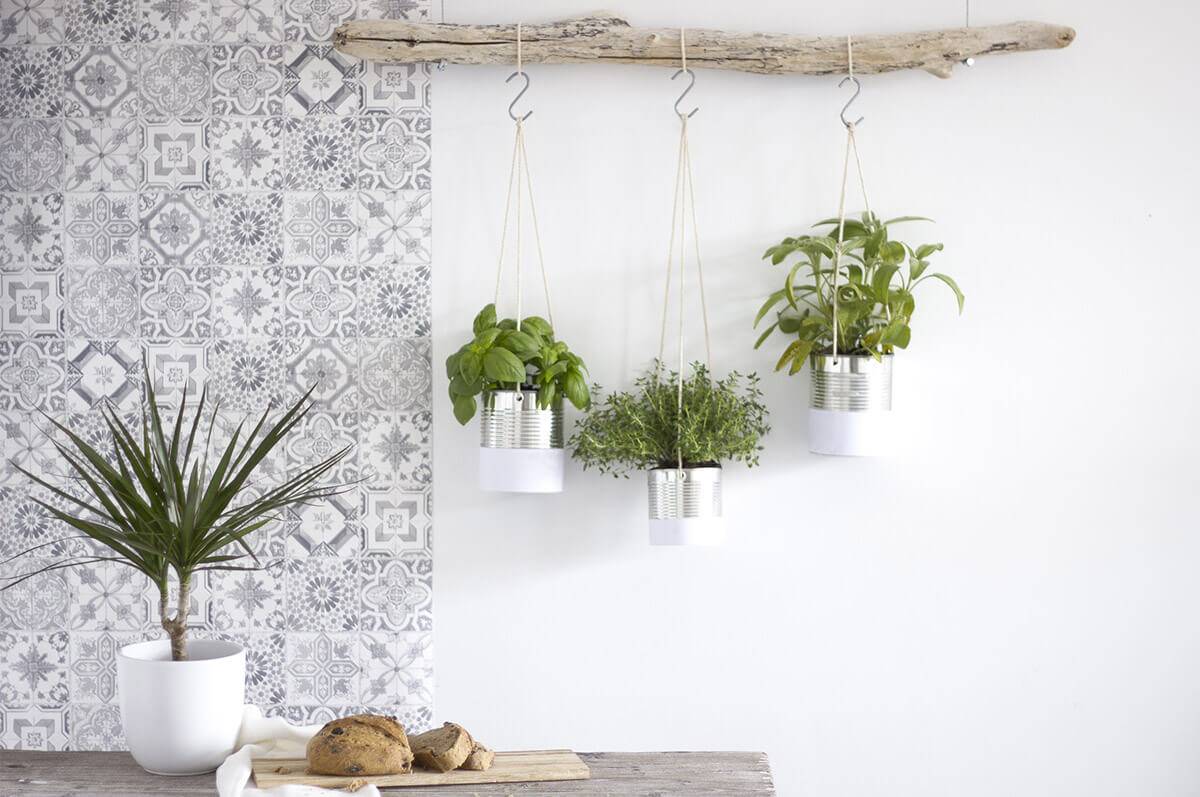
Space, Space, and More Space.
If you crowd a plant in a too-small planter, don’t expect it to thrive. Its root system needs space to grow, and if it doesn’t have it, it won’t be able to support the plant. For good growth, remove the herb from its original three- or four-inch pot and replant it in a container that’s at least six inches wide with drainage holes and a waterproof saucer.
Be Wise About Placement
Some herbs, such as mint and coriander, should never be planted with other herbs since they multiply and tend to take over the rest of the garden. If you intend to plant anything that may impact the growth of other herbs, you should put these in their own pots.
Many herbs are relatively compact and can be combined into one pot. Consider which herbs your favorite recipes call for and put together a pot or two such as basil, parsley, and thyme or rosemary, tarragon, and chives. If you want one container to hold a few different plants, ensure they all have the same sun, temperature, and water needs.
Don’t Forget Fertilizer
Once a month, fortify your plants with organic fertilizer or compost.
Careful with Water
As your garden grows, don’t overwater plants until they get soggy. That’ll cause root damage. For a healthy garden, water when the soil looks and feels dry.
